How To Detangle Hair: 6 Expert Tips For All Hair Types
Learn the easiest ways to get rid of knots in your hair without damaging your tresses.

Image: ShutterStock
Having long hair is a blessing, but a burden too. A lot goes into maintaining your locks, and one of the biggest tasks is to clear hair tangles. So, how to detangle the hair? This is particularly important to know as resorting to harsh methods could severely damage your hair.
Tangles are common, whatever your hair type, but they can worsen if you have a coiled mane. Most women tend to to brush their hair knots aggressively or pull the strands apart to remove the tangles. This is an inexcusable mistake as far as hair health is concerned. Such practices could make their hair prone to matting and breakage. Is there a way out of this nightmare? Yes. You can get rid of the hair tangling without damaging your locks by following a few simple hacks. What are they?
In this article, we will look into the causes of hair tangling, the best hacks to detangle your locks, and the dos and don’ts to keep in mind. Keep scrolling for more information.
In This Article
What Causes Hair Tangling?

Hair tangling is caused when your hair is damaged and dry. To help you understand this better, let’s start by briefly looking at the basic structure of the hair.
The hair shaft is comprised of three distinct layers of cells: medulla, cortex, and cuticle.
- The medulla is the invisible inner layer of the hair shaft.
- The thick middle layer is known as the cortex.
- The cuticle forms the outer protective layer.
A hair shaft with a healthy cuticle has a smooth appearance and can retain moisture.
However, when the hair’s cuticle layer is damaged, it becomes extremely porous, breaks easily, and cannot seal in moisture, thus resulting in frizz and dryness.
Dry, frizzy, damaged, and brittle hair is especially prone to tangling as it is plagued by friction, which causes it to wrap around other strands of hair.
Common factors that lead to damaged and tangled hair include:
- Heat styling
- Neglected split ends
- Harsh weather
- Chemical treatments, such as bleaching, coloring, and highlighting
- Over-washing your hair
- Vigorously towel drying
- Aggressive or rough hair brushing
- Sleeping with your hair down
- Showering with unfiltered or chlorinated water
 Quick Tip
Quick TipTo find out how to detangle your hair the right way, check out the next section.
Key Takeaways
- Coconut oil has anti-inflammatory and antifungal properties that help reduce dandruff and combat hair damage.
- Creating your own coconut oil conditioner can help avoid the chemicals and artificial fragrances present in commercial conditioners.
- You may mix coconut oil with ingredients like shea butter, jojoba oil, and essential oils to make your hair shiny and healthy.
- You can use your homemade coconut oil conditioner as a pre-poo treatment, a deep conditioner, or a leave-in conditioner.
How To Detangle Hair: Simple Tips For Different Hair Types
Everyone’s hair is different, and different hair types have different quirks. Chances are a game-changing tip that may work for detangling straight, long hair may not necessarily work for detangling thick, curly hair. So, here are some hair detangling tips for different hair types:
I. How To Detangle Straight Hair

Straight hair is commonly classified as type 1 hair. Straight, short, and thin hair tends to become greasy easily as the oil from the sebaceous glandsi Microscopic glands located in the hair follicles that secrete an oily fluid called sebum to keep your hair from drying out. travels down the hair shaft faster.
Most men and women with thin, fine hair tend to make the common mistake of not using a hair conditioner after shampooing their hair because they feel conditioning will leave their hair looking overly slick and oily. This, however, is a misguided notion.
Every hair type requires some kind of nourishment, and skipping on conditioner will only result in dry, brittle, and under-nourished hair that is more prone to tangling. Instead, choose a conditioner that is specifically formulated for oily hair. Once you have let the conditioner soak in, gently brush your hair out using a detangling or wide-toothed comb.
One other cardinal rule to remember is to always pat your hair dry and never towel dry it by rubbing vigorously. Vigorous rubbing will create friction and damage your hair. Instead, use a soft T-shirt or a microfiber hair towel to gently squeeze out the excess water.
II. How To Detangle Thick, Curly Hair
Hair types 2, 3, and 4 range from wavy to curly to very tightly coiled curls. While the degree of curliness may vary from individual to individual, thick and curly is generally more tolerant to things like heat, hair color, and harsh hair products.
A scientific study published in the American Journal of Physics has also found that curly hair tends to get less tangled than straight hair (1). But, that doesn’t resolve all of their knotty hair woes!
Many men and women with type 4 hair – especially 4b and 3c hair – find the detangling process challenging. Here’s how to detangle thick, curly hair easily:
- Start by detangling your hair in the shower. Working your way through the knots is always easier when you have some moisture or conditioner in your hair.
LexiMarcella, a beauty vlogger, speaks about how she detangles her thick and curly hair in her vlog. She said, “I let my conditioner sit for a while. Make sure my conditioner is really helping to soften my hair. What I do next is I detangle in the shower (i)”
- Work in small sections at a time, always starting from the bottom and working your way up. While this can seem tedious, if you are not careful and patient, you could end up tearing your precious strands into shreds.
- Finger detangling is an effective way to smoothen out knots as it allows you to feel the bigger tangles and knots in your hair and gently work your way around them.
- In 4a, 4b, and 3c hair types, the curls can sometimes be tightly coiled and particularly stubborn. Hence, a deeply moisturizing shampoo and conditioner are recommended for detangling 4a, 4b, and 3c hair types.
III. How To Detangle Chemically Processed Hair

Chemical-laden hair treatments such as perming, bleaching, coloring, keratin treatment, and relaxers make your hair more susceptible to damage, making it fragile, coarse, and dry. Detangling chemically treated hair, therefore, needs to be done with extra care.
Avoid brushing out your knots while your hair is still damp. Instead, spritz your hair generously with a leave-in detangling spray or conditioner before brushing out your knots with a wide-toothed comb.
Another downside to chemical treatments is that it can make your hair more prone to split ends. So, it is important to snip off those weak, dehydrated tips every couple of months to protect your hair from further breakage.
IV. How To Detangle A Child’s Hair
Working through the knots of a child’s hair is something most parents struggle with. But with some patience and caution, those traumatic tangles can be easily undone. Here’s how to detangle your baby’s hair:
- Start by gently cleansing your child’s hair with a kid-friendly shampoo. Then, generously slather on some conditioner or detangling spray.
- Kids generally love personal care products that are fruit-flavored. So, using a shampoo and conditioner that smell fresh and stimulate their senses will help them look forward to bath time.
- Parents who want a minimally toxic hair detangler for their child can also opt to make a homemade hair detangler spray. Simply pour in about 2 tablespoons of your child’s favorite conditioner into a spray bottle and dilute it with some warm water.
- Spray the conditioner or detangling spray on your child’s hair and allow it to sit for a few minutes.
- Gently run your fingers through their hair to loosen any tangles. If you are using a brush, ensure that you use a special detangling brush.
- The Connecticut State Department of Children and Families (DCF) recommends using a boar-bristle or a wide-toothed comb for children with type 4 hair and advises parents to divide the hair into small, easily manageable sections so that the child is not hurt in the process (2).
- For toddlers and kids who have long hair or hair prone to tangling, braiding it or tying it in a loose ponytail can also help.
V. How To Detangle Synthetic Hair

From fabric softeners to laundry detergents, several popular methods are thought to be useful in detangling synthetic hair. The American Cancer Society shares these tips that can help keep your synthetic hair or wigs free from tangles and frizz (3):
- Synthetic wigs that are worn daily and subjected to many hair styling products should be washed every 10-14 days.
- Wigs should be washed according to the instructions attached and adequately spritzed with a wig conditioner. The wig conditioner will protect the synthetic fibers from drying out.
- To dry the wig, set it on a portable stand for about 8 to 12 hours.
- To keep your wig tangle-free, ensure that you always place it on a stand and not in a plastic bag or box. Hair dyes and heat are also a big no-no for synthetic wigs.
VI. How To Detangle Severely Knotted Hair
Hair extensions, weaves, and certain styles like Bantu knotsi A protective hairstyle in which the hair is divided into sections, twisted, and wrapped in small knot-like buns. , Nubian coilsi A hairstyle where double-strand twisted or coil-twisted hair is knotted and fastened with a pin or elastic band. , and tight braids can sometimes result in severely matted hair. Detangling dreadlocked hair or severely knotted hair is usually quite difficult but not impossible.
If your hair is caught up in a tough tangle, try coating the knot with a silicone hair serum or lube and gently loosen it using a wide-toothed comb. An automated detangling brush is also an effective tool for loosening knots and taming unruly hair.
Now that we’ve told you what works for specific hair types, you probably have a good idea of how to keep those tangles at bay. But, we have some more detangling do’s and don’ts that could help you out. Check them out below!
Detangling Hair: Do’s and Don’ts For All Hair Types
Do’s
- Detangle Hair When It Is Wet Or Damp

Detangling hair when it is wet or damp makes the process faster and easier. Apply a generous amount of leave-in conditioner after stepping out of the shower. This will prevent damage and breakage when you comb your knots out.
- Use A Sulfate-Free Shampoo

Dry hair is one of the root causes of hair tangling. To prevent excessive drying, use a sulfate-free shampoo to cleanse your hair. A sulfate-free shampoo will not strip away the natural oils of your hair.
- Deep Condition Your Hair
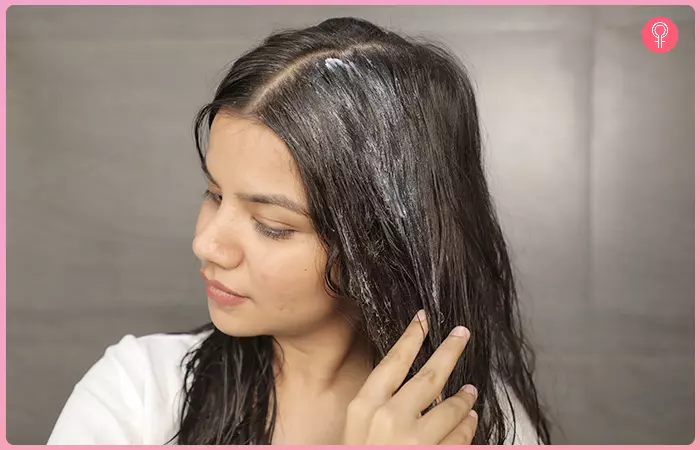
Conditioner is key to detangling your hair easily! Saturate or deep condition your hair with an oil or conditioner with lots of slip. This will loosen the knots and allow for easier detangling. Coconut oil, sweet almond oil, jojoba oil, and argan oil are all incredible for keeping your hair smooth and nourished.
To use coconut oil to detangle hair, let your hair absorb a generous amount of it. To maximize its benefits, you can also wrap a towel around your hair while it soaks in the oil.
- Divide Your Hair Into Sections
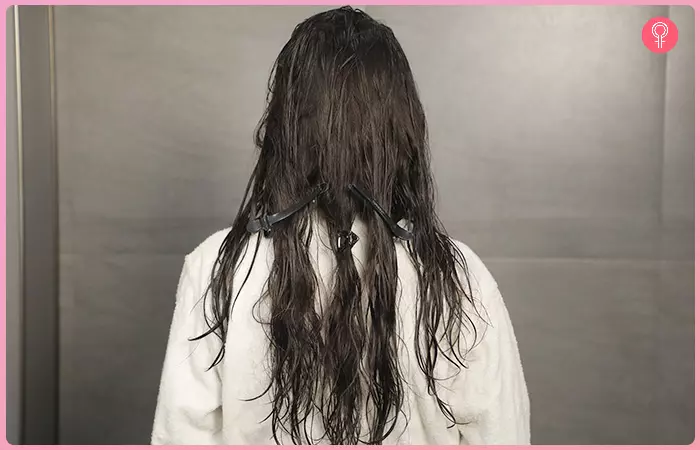
Before you start detangling your hair, divide it into four to six equal sections using clips or braids. Smaller sections are not only easier to work with, but they also ensure that all the knots in your hair have been properly undone.
- Use A Seamless Comb

A seamless comb will glide through your hair more easily and will not snap or snag the knot off and break your hair strands.
- Use Your Fingers to Get Rid Of Tangles
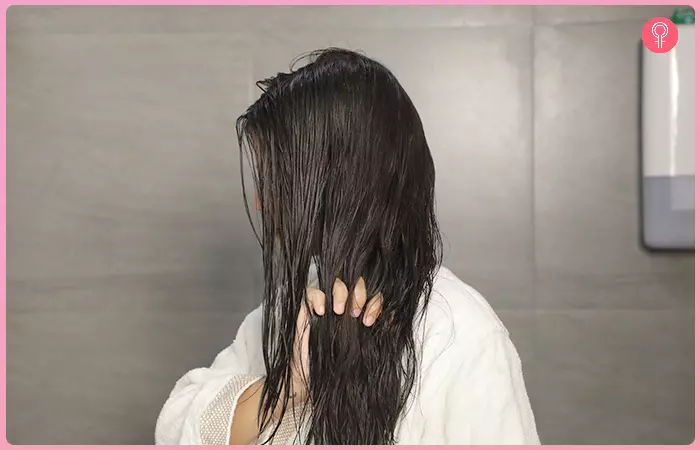
Always use your fingers to work through your tangles first. It’s gentler on your hair, and you will incur lesser damage as well.
- Get Regular Trims

Hair maintenance is necessary if you notice split ends and breakage. Go in for a quick trim to prevent damaging your hair further.
- Cover Your Hair

Cold, dry hair and harsh temperatures can suck the moisture out of your hair and leave it dehydrated, dry, and brittle. Therefore, it is important to cover your locks with a hat or scarf before you step out to prevent static and frizz.
- Deep Treatments
Your hair, like everything else, needs an occasional extra dose of care. So, deep condition it with a hair mask or natural homemade hair treatments every once in a while.
It’s often stated that yogurt, shea butter, henna, aloe vera, and hot oil treatments can give your hair that much-needed moisture, softness, and shine (4).
Although not backed by a solid empirical study, there is anecdotal evidence that apple cider vinegar (ACV) works for hair prone to tangles. Here’s how you can make a DIY hair detangler at home with ACV:
- Dilute a couple of tablespoons of apple cider vinegar with water and spray it over your hair evenly.
- You can add a drop or two of your favorite essential oil to this mixture as the smell of vinegar can sometimes be a bit strong.
- Let the mixture sit in your hair for about 2 to 5 minutes before you rinse it out with water.
 Quick Tip
Quick TipDon’ts
- Don’t Start Detangling From The Roots
If you start detangling your hair from the roots, you risk putting a lot of pressure on your scalp and causing hair breakage. Instead, start detangling your hair from the ends and gradually work your way up to spare yourself the pain and breakage.
- Don’t Play With Your Hair
Are your hands always in your hair? Twirling, pulling, and playing with your hair can be quite damaging and cause tangles. So, it’s best to make a conscious effort to keep your hands off your hair!
- Don’t Sleep With Your Hair Down
If you sleep with your hair down at night, you will wake up with a tangled mess in the back of your head in the morning. This is because direct contact with fabric can make your hair dry out.
Therefore, to prevent breaking and snagging your hair while sleeping, wrap it in a silk bonnet and sleep on a satin pillowcase. Protective hairstyles like twists, braids, and buns can also minimize damage to your hair.
- Don’t Shampoo Your Hair Too Much
Washing your hair too much will suck out all the natural oils and moisture from your hair, leaving it frizzy and dry. Therefore, aim to wash your hair only 2 to 4 times every week.
- Don’t Blow-Dry And Heat Style Your Hair Too Often
While heat styling can help give you those dreamy curls or that perfect stick-straight hair, it can also disrupt the hair’s natural texture and cause a lot of damage and breakage.
- Don’t Wash Your Hair With Chlorinated Or Hard Water
Your hair can dry out very quickly when it is exposed to chlorinated or Hard water. So invest in a water-softening shower head if you don’t want hard water wreaking havoc on your hair. Protect your hair with a shower cap when you go swimming and spritz a sunscreen oil spray on it before you step out into the sun.
- Don’t Use Rubber Bands And Elastic Hair Ties
Elastic hair ties and rubber bands can have quite a tight grip. Using them can pull on your hair, causing breakage and split ends, especially with repeated use. To protect your hair, switch to soft, snag-free elastics or scrunchies that won’t tug or damage your strands.
How Often Should You Detangle Natural Hair?
Natural hair must ideally be detangled after every wash or co-wash. Since naturally curly hair types are prone to dryness and frizz, ensure to detangle them only after applying a conditioning product to the hair (be it an in-shower conditioner or a leave-in conditioning serum).
How Do You Detangle Matted Hair Painlessly?
The most efficient and painless method to detangle severely matted hair is using a special detangler product with a strong formula. Use it generously over the matted clumps and begin by trying to break them apart with just your fingers. You may use some hair oil to further lubricate the clumps. Once they are sufficiently loosened, you may brush through the remaining tangles with a detangler or a wide-toothed comb. You can then follow up with a wash and hydrating conditioner.
To fight off those dreaded tangles, you need to treat your hair right! And, quite frankly, you just can’t afford to skip shampoo, conditioner, and hair combing. With the right tools, right techniques, and right products, you can easily detangle even the most dreaded knots and keep your hair healthy, soft, and smooth!
Infographic: Dos And Don’ts Of Detangling Your Hair
All of us struggle with tangled hair, no matter the hair type. However, detangling your hair too aggressively or the wrong way may cause hair breakage. To protect your hair from further damage, check out this infographic for simple tips on how to detangle your hair safely and effectively.
Some thing wrong with infographic shortcode. please verify shortcode syntaxFrequently Asked Questions
Why does it hurt to detangle hair?
Tangled hair can be stubborn, and trying to yank them apart can pull on the skin of your scalp, hurting it. Use conditioners, oil, or detangling products suitable for your hair type to detangle your hair gently. However, if your scalp hurts too much, it might be because of underlying conditions that have made your scalp sensitive. Visit a dermatologist immediately in such a case.
Does detangling hair help it grow?
Detangling minimizes issues such as breakage and frizziness and maintains good hair health, which is crucial for proper hair growth.
How long does it take to detangle natural hair?
Detangling natural hair may take 15-20 minutes. However, the time may vary depending on the length of the hair.
What are fairy knots?
Fairy knots often appear on curly hair types. They are tiny, stubborn knots that form on a single hair strand.
Some thing wrong with illustration image shortcode. please verify shortcode syntaxRead full bio of Dr. Shruti Chavan
Read full bio of Arshiya Syeda
Read full bio of Ramona Sinha
Read full bio of Medha Deb







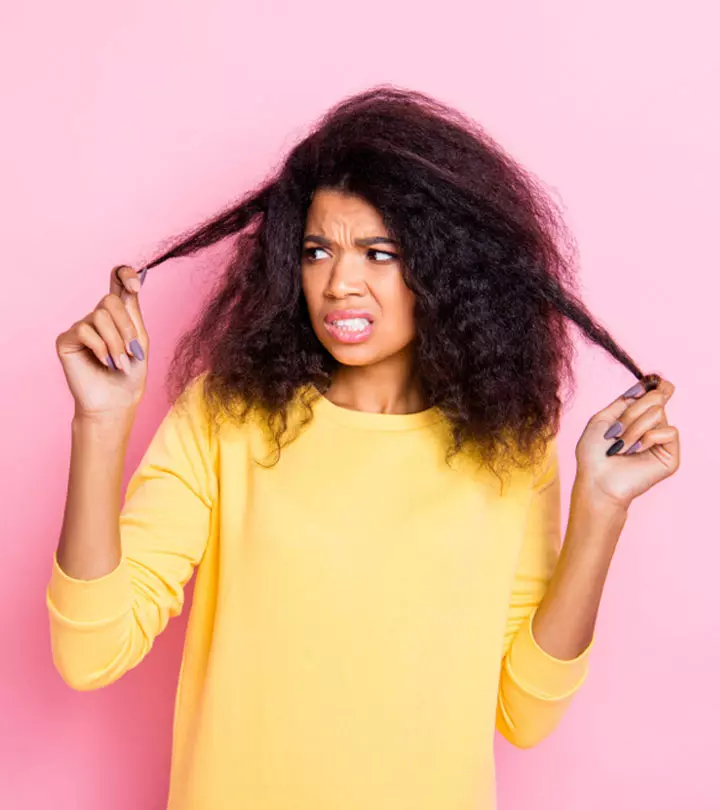
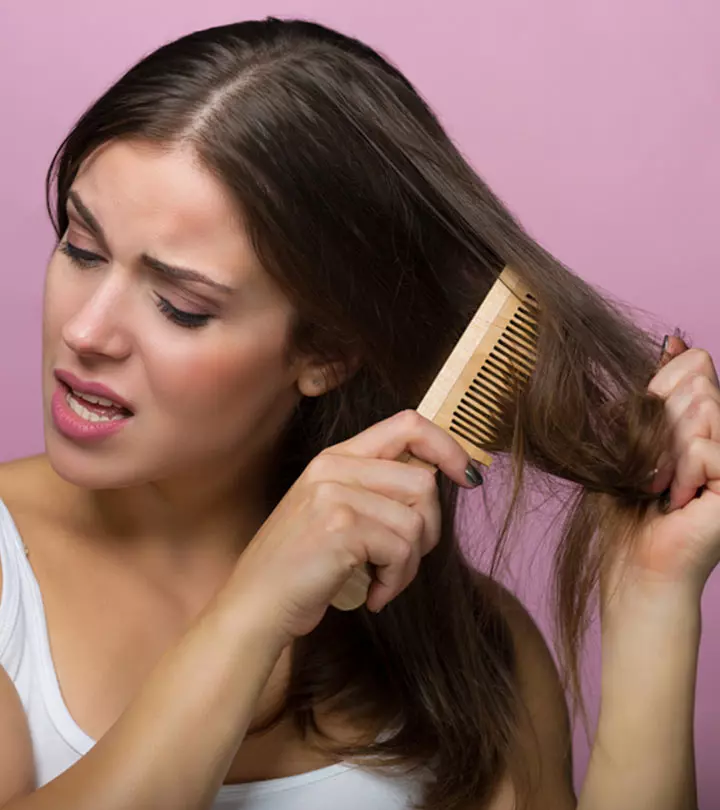
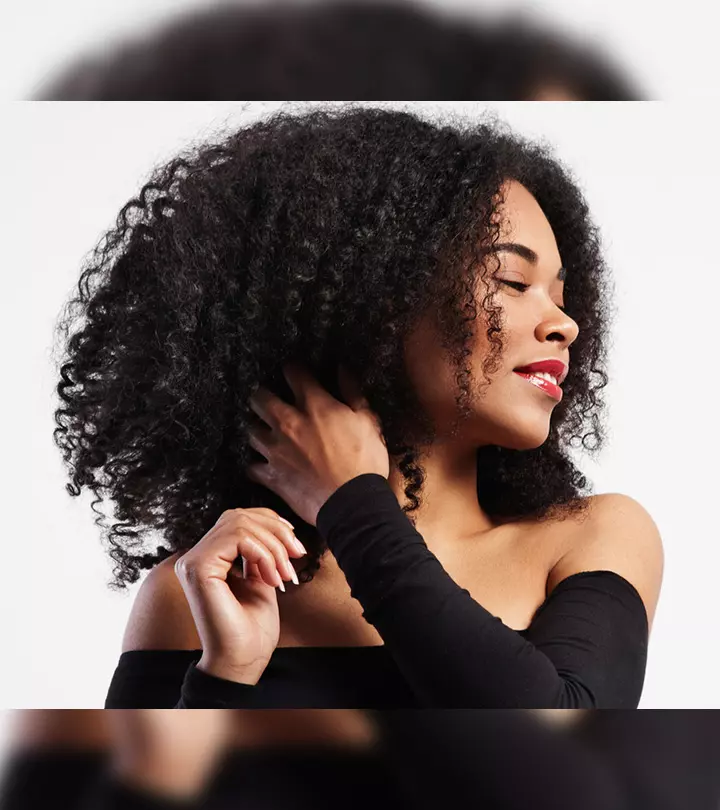






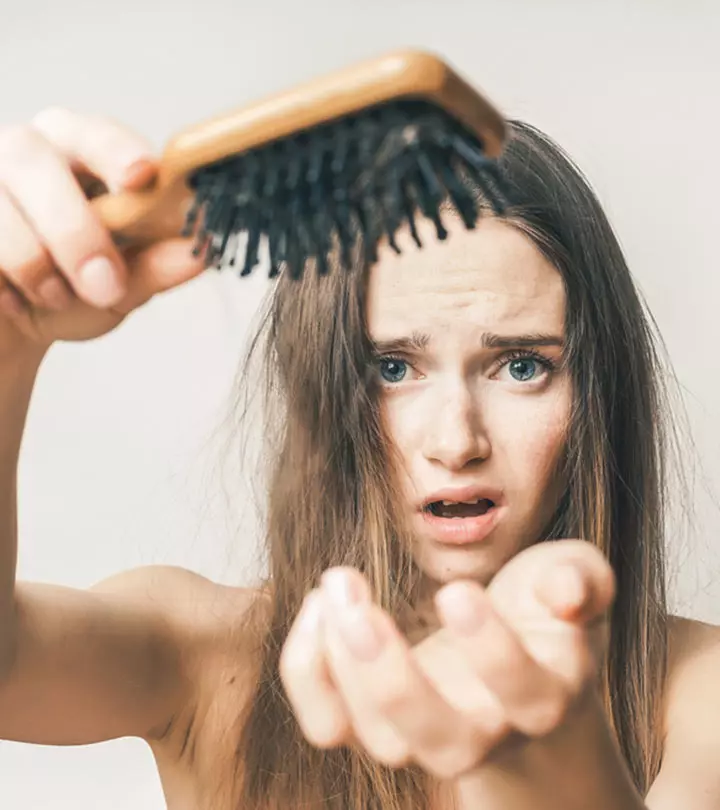





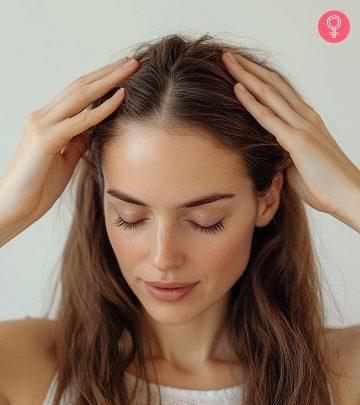



Community Experiences
Join the conversation and become a part of our empowering community! Share your stories, experiences, and insights to connect with other beauty, lifestyle, and health enthusiasts.